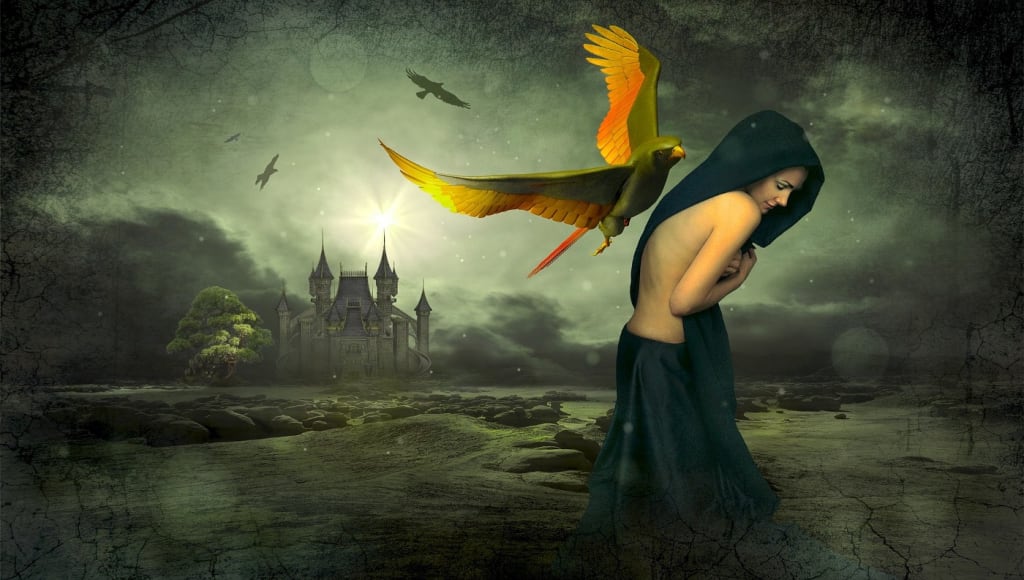The Relationship Between the Imaginary World and Reality
Imaginary World?

When you're in a relationship, it's important to maintain a balance between your imaginary world and reality.
Your imaginary world is the place where you go to escape reality. It's a place where you can be who you want to be and do whatever you please. It's a place of fantasy and make-believe.
Reality, on the other hand, is the place where you have to deal with the unpleasant aspects of life. It's where you have to face the challenges and hardships that come your way.
Ideally, you want to have a healthy balance between your imaginary world and reality. You don't want to spend too much time in one or the other, because that can be harmful to your relationship.
In this post, we'll explore the relationship between the imaginary world and reality, and we'll offer some tips for maintaining a healthy balance.
What Is the Imaginary World?
Do you ever find yourself daydreaming about taking a vacation to an exotic destination? Or maybe going on a wild adventure that you wouldn't normally try in real life?
That's the imaginary world. It's a place where we can explore new possibilities without any risk. We can be anyone we want to be, do anything we want to do, and go anywhere we want to go.
Some people might call this place the "dream world." Others might call it a "paracosm." But whatever you call it, the imaginary world is a fascinating place that can tell us a lot about ourselves and our relationships with others.

What Is the Relationship Between the Imaginary World and Reality?
Do you ever find yourself lost in thought, picturing a scenario that's completely different from the one you're in? Perhaps you're daydreaming about being on a beach, or lost in a forest.
Or maybe your thoughts are consumed with what-ifs? What if I won this game? What if I won the lottery? What if I had a different life?
All of these scenarios take place in an imaginary world. It's a world of thought, and it's separate from the reality we experience while we're awake.
But here's the thing: even though they're separate, the imaginary and real worlds are completely intermixed in our brain. So when we're lost in thought, reality and imagination are happening at the same time.

How Can Understanding the Relationship Between the Imaginary World and Reality Benefit Us?
How can understanding the relationship between the imaginary world and reality benefit us?
For one, it can help us problem solve. Studies have shown that daydreaming can help us find solutions to difficult problems that we might be stuck on. It can also trigger our creativity and help us come up with new ideas.
And finally, imagination is often associated with creativity. Most children develop imaginary worlds (known as paracosms) around age 9. These worlds can be incredibly elaborate, and in many cases, children will spend hours every day living in them.
It's fascinating to think about how much creativity and innovation has been inspired by imaginary worlds. Some of the most famous works of art and science were born out of someone's imagination. So the next time you're feeling stuck creatively, maybe take a trip to your own personal imaginary world for some inspiration.
What Are Some Examples of How the Imaginary World Has Helped Shape Reality?
You may not know it, but your imagination has a pretty big impact on your day-to-day life. In fact, it might even be more powerful than you think.
There are plenty of examples of how the imaginary world has helped shape reality. For instance, daydreaming allows us to imagine new adventures without any risk. And while we're dreaming up those new adventures, our brains are actually getting a workout.
Fictional worlds also engage our imaginations more than developing real skills. I mean, how many times have you read a book or watched a movie and been so engaged that you lost track of time? Compare that to how often you've been so engaged in a task that you lost track of time. Chances are, the answer is not very often.
But the most obvious example of how imagination shapes reality is probably when we dream. Our dreams give us a glimpse into what we're thinking and feeling, and sometimes they even provide clues about our future.

How Can We Use the Imaginary World to Our Advantage?
How can we use the imaginary world to our advantage? Everyone's approach will be different, but here are some ideas to get you started.
Daydreaming can help us solve problems or come up with new ideas. If we're feeling stuck or can't seem to find a solution, taking a break to let our minds wander can be really helpful.
Exposure to fiction and fictional characters also increases our empathy and broadens our social skills. We learn about different cultures and ways of life by reading and watching stories that take place in other parts of the world. This makes us more understanding and tolerant of people who are different from us.
Activities that use creativity and imagination are beneficial to everyone. Coloring, drawing, writing stories, playing pretend—these activities help us express ourselves and think outside the box. They also promote problem-solving skills and encourage creative thinking.
What Are Some Things to Keep in Mind When Exploring the Imaginary World?
When you think about it, the imaginary world is a lot like reality. They both have their own set of rules, and you can explore them both in different ways. But there are a few things to keep in mind when exploring the imaginary world.
For starters, daydreaming can help solve problems, trigger creativity, and inspire great works of art and science. And during dreams, we not only perceive an imaginary world, but also act upon it. This is why dreams are often so vivid and realistic.
But what about people who create imaginary friends? A new study found a significant relationship between the creation of imaginary friends and the development of paracosms, or elaborate imaginary worlds. So if you're feeling creative, take some time to explore the imaginary world—you never know what you might find.

Conclusion
As you can see, there can be a strong relationship between the imaginary world and reality. In some cases, the imaginary world can even be more real to someone than the actual world. What's important is that you pay attention to both of these worlds and make sure that you're living in the reality that you want to live in.
Please support the post if you like the article!
Cheers!
About the Creator
Muhammad Farrukh
Content Writer. Interests include: Psychology, Romanticism, Technology, Science fiction, Philosophy and Spirituality.
Enjoyed the story? Support the Creator.
Subscribe for free to receive all their stories in your feed. You could also pledge your support or give them a one-off tip, letting them know you appreciate their work.






Comments
There are no comments for this story
Be the first to respond and start the conversation.